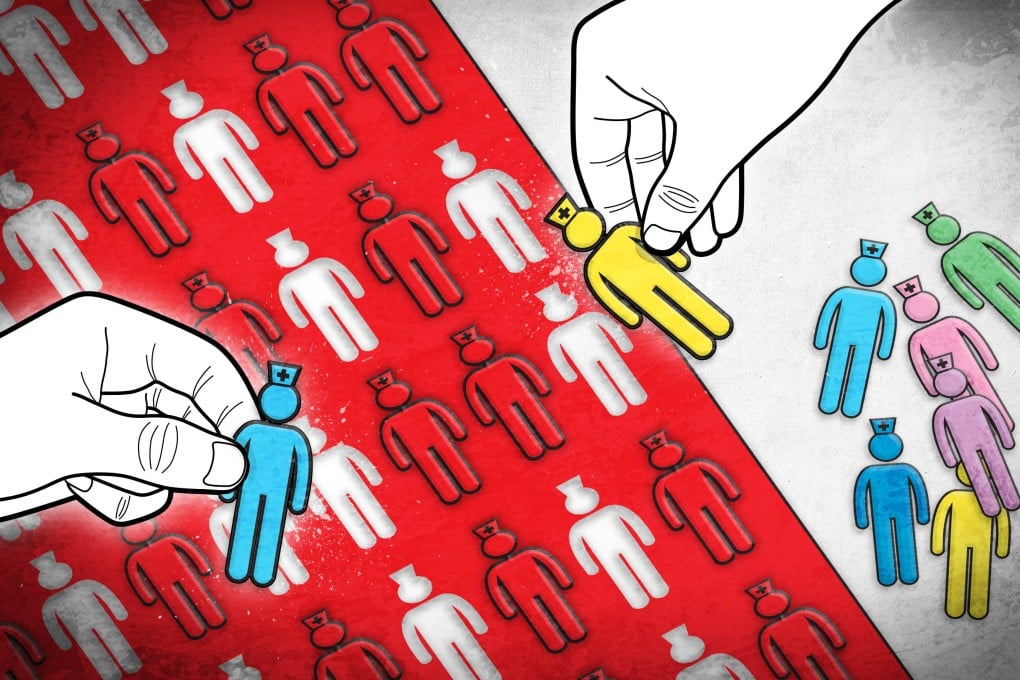
MORE than 3.2million people are at risk of developing type 2 diabetes in the UK. The condition, characterised by high blood sugar levels , is caused by a lack of the hormone insulin, and there are numerous triggers.
Many of these things - like your age, ethnicity and family history - you can’t do much about. But there are some easy lifestyle changes you can make to significantly lower your chances of being diagnosed. These include losing weight, increasing your physical activity and having access to good healthcare.
The simplest? Switching up some of the foods you eat every day. READ MORE ON DIABETES Mark Gilbert, nutritionist at The 1:1 Diet by Cambridge Weight Plan , said: “These are food swaps for people living with type 2 diabetes, as well as for people at risk of developing type 2 diabetes. “They all help avoid unnecessary sugar spikes in the blood and reduce body fat storage, which are both risk factors for diabetes.
” 1. An apple instead of grapes "Have an apple, orange, or pear instead of grapes," Mark said. "Grapes are notorious for increasing blood sugar responses.
" Most read in Health You can bag 500g of apples from Asda for £1.09. 2.
Rye instead of white bread While white bread can be delicious, it's not the best for your blood sugar. Instead, choose whole rye bread, Mark urged. "It has a lower glycaemic index so causes a lower blood sugar spike," he added.
Rye bread is available in most supermarkets. You can pick up Schneider Brot German Vollkornbrot for £1.50 in Waitrose.
3. 'Just yellow' bananas instead of over-ripe ones One of the simplest things you can do is eat your bananas at the right time. "Switch from overly-ripe bananas to ‘just yellow’ bananas," the expert said.
"Ripe bananas have more sugar and less fibre." Continue buying your normal bunch, for 78p from Tesco for example, just eat them a bit quicker! 4. Green tea instead of fruit juice In theory, fruit juice is healthy - it is made of something we're told to eat more of after all.
However, it contains a lot of calories and sugar - sometimes more than Coca Cola. Mark said: "Minimise the calories you drink by avoiding sugary beverages. "Instead of fruit juices or fizzy drinks, go for green tea.
"It improves insulin function. "And here's a hack: it is really nice ice cold, with sweetener and lemon." A box of 20 green tea bags costs 75p in Tesco.
5. Rolled oats instead of instant Another straightforward trade is your morning porridge. "Swap ready-to-go oats (the small, powdery ones) for larger rolled or steel-cut oats," Mark said.
"They take longer to cook but cause much lower sugar spikes." They can also be significantly cheaper. Try Mornflake Whole Jumbo Oats (3kg) from Morrisons for £5.
50, which works out at just 14p per portion. 6. Butter instead of vegetable oil When you're cooking, opt for butter, tallow or coconut oil instead of seed or vegetable oils, Mark said.
"The latter prioritise the storage of fat," he added. Unsalted British Butter (250g) from M&S costs £1.90.
7. Honey instead of sugar And for sweetening food and drink, use honey instead of sugar , Mark, science officer for Total Diet & Meal Replacements Europe, said. "It still has calories, but honey has been shown to help preserve insulin function better than the equivalent sugar.
" Sainsbury's sells Clear Honey (454g) for £1.75. 8.
Eggs instead of cereal It can be easy to reach for a box of cornflakes when you're bleary-eyed and rushing out the door. But making time to cook eggs for breakfast could make a real difference, Mark said. "You get a much lower sugar and insulin spike, and it reduces hunger and cravings," he added.
You can get six Free Range British Eggs for 99p in Aldi. 9. Protein bars instead of chocolate You probably knew chocolate would make the list.
Due to its high sugar content, it's best to ditch the chocolate and granola bars for protein bars, Mark said. "This will reduce sugar spikes and keep you fuller for longer," he added. There are numerous protein bars on the market, so find a flavour you like the sound of.
If you're a fan of Terry's Chocolate Orange, why not try THE BAR Chocolate Orange from Holland & Barrett for £1.50? 10. Protein instead of more carbs And finally, resist the urge to pile your dinner plate full of extra pasta, rice or bread.
"Swap carbs for more protein and eat the protein first in a meal," Mark said. "This reduces your blood sugar response." THERE are two main types of diabetes, which causes a person's blood sugar level to become too high.
Type 1 diabetes is a lifelong condition where the body's immune system attacks and destroys the cells that produce the hormone insulin. It affects around 344,000 people in the UK. Type 2 diabetes on the other hand is far more common, accounting for more than 90 per cent of the 4.
4million adults with diabetes. It occurs when the body doesn't produce enough insulin, or the body's cells don't react to it properly. There are no lifestyle changes you can make to lower your risk of type 1 diabetes.
But you may be at higher risk of type 2 diabetes if you are overweight or obese, eat unhealthily, have a family history of the condition, take certain medications for a long time, have high blood pressure, and have gestational diabetes during pregnancy. People of Asian, Black African or African Caribbean origin are also at increased risk. An estimated 1.
2million people are currently living with type 2 diabetes but are yet to be diagnosed. More than 3.2million are thought to be at risk of developing the condition.
The most common symptoms are: Needing to wee a lot, especially at night Being really thirsty Feeling more tired than usual Losing weight without trying to Genital itching or thrush Cuts and wounds taking longer to heal Blurred vision Increased hunger Source: NHS and Diabetes UK Every week, diabetes leads to 184 amputations, more than 930 strokes, 660 heart attacks and 2,990 cases of heart failure. The NHS spends at least £10billion a year on diabetes - about 10 per cent of its entire budget. Read More on The US Sun Almost 80 per cent of the money goes towards treating complications.
In some hospitals, over a quarter of beds are used by people with diabetes..














